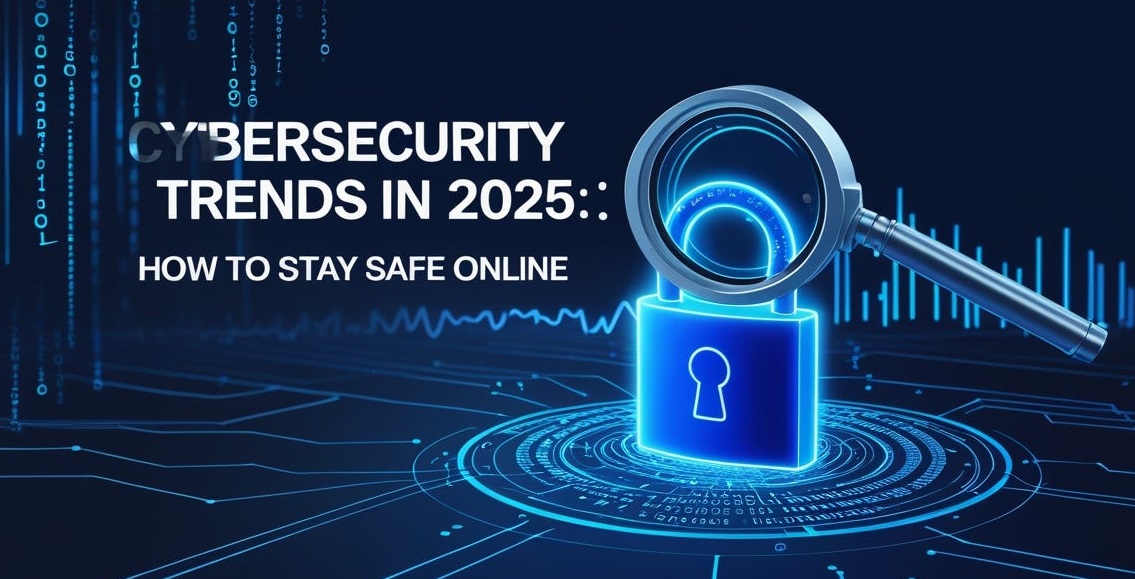Introduction
With the increasing reliance on digital platforms, cybersecurity has become a critical concern for individuals, businesses, and governments. Cyber threats are evolving, making it essential to stay ahead of hackers and safeguard sensitive data. From AI-driven security measures to blockchain-based authentication, the cybersecurity landscape in 2025 is shaping up to be more advanced than ever.
This article explores the top cybersecurity trends, strategies for staying safe online, and emerging technologies designed to protect digital assets.
The Evolution of Cybersecurity: A Brief Overview
Cybersecurity has undergone significant advancements over the years. Some key milestones include:
- 1990s: Basic antivirus software and firewalls emerge.
- 2000s: Rise of phishing attacks, malware, and encryption techniques.
- 2010s: Growth of cloud security and multi-factor authentication (MFA).
- 2020s: AI-powered cybersecurity, zero-trust architecture, and blockchain security.
As cyber threats become more sophisticated, cybersecurity measures must evolve to counteract them effectively.
Top Cybersecurity Trends in 2025
1. AI-Powered Threat Detection
- Machine learning models to predict and prevent cyberattacks.
- AI-based anomaly detection in network traffic.
- Automated responses to security threats.
2. Zero-Trust Security Model
- Continuous verification of users and devices.
- Micro-segmentation to limit attack surfaces.
- Identity and access management (IAM) for enhanced protection.
3. Quantum-Safe Cryptography
- Development of encryption resistant to quantum computing attacks.
- Post-quantum cryptographic algorithms adopted by enterprises.
- Secure communications and data transmission.
4. Blockchain-Based Cybersecurity Solutions
- Decentralized identity verification.
- Secure transactions with blockchain encryption.
- Enhanced transparency and tamper-proof records.
5. Cybersecurity for Remote Work and IoT Devices
- Strengthened endpoint security for home and office networks.
- AI-driven protection for IoT devices.
- Secure VPNs and encrypted communication channels.
6. Cloud Security Enhancements
- Advanced threat monitoring for cloud environments.
- Zero-trust cloud security frameworks.
- Secure API integrations to prevent cloud vulnerabilities.
7. Multi-Factor Authentication (MFA) 2.0
- Biometric authentication advancements.
- Adaptive MFA based on user behavior.
- Passwordless authentication for enhanced security.
8. Ransomware Defense Strategies
- AI-powered detection of ransomware threats.
- Cyber insurance policies for ransomware attacks.
- Decentralized data backups to prevent losses.
9. Regulatory Compliance and Data Privacy
- Global data protection regulations evolving (GDPR, CCPA, etc.).
- Stricter penalties for data breaches.
- Enhanced compliance frameworks for businesses.
10. Cybersecurity Awareness and Training
- Gamified cybersecurity education programs.
- Simulated phishing attack training for employees.
- Increased focus on cybersecurity culture within organizations.
The Impact of Cybersecurity on Businesses and Individuals
1. Business Cybersecurity Measures
| Cybersecurity Trend | Business Benefit |
|---|---|
| AI-Powered Threat Detection | Prevents cyberattacks proactively |
| Zero-Trust Security Model | Reduces insider threats |
| Quantum-Safe Cryptography | Ensures future-proof encryption |
2. Individual Online Safety
| Cybersecurity Strategy | Benefit for Individuals |
| Multi-Factor Authentication | Protects personal accounts from hacking |
| Secure VPN and Encryption | Enhances privacy online |
| Cybersecurity Awareness Training | Helps detect phishing scams |
3. Cybersecurity for IoT and Cloud
| Security Feature | Impact on IoT and Cloud Security |
| AI-driven IoT Security | Prevents unauthorized device access |
| Zero-Trust Cloud Framework | Protects sensitive cloud data |
| Blockchain-Based Identity | Prevents identity theft |
Challenges in Cybersecurity for 2025
Despite advancements, cybersecurity faces ongoing challenges:
- Sophisticated Cyber Threats: Hackers constantly evolve their tactics.
- Skills Shortage: Demand for cybersecurity professionals exceeds supply.
- Regulatory Complexity: Compliance with multiple data protection laws is challenging.
- Privacy vs. Security Balance: Ensuring security without compromising user privacy.
- Cybersecurity Costs: Implementing strong security measures requires significant investment.
The Future of Cybersecurity Beyond 2025
Looking ahead, cybersecurity is expected to advance in areas such as:
- AI-Driven Automated Security: Real-time threat response with minimal human intervention.
- Quantum-Resistant Encryption: Protecting data from future quantum attacks.
- Cybersecurity for Space Tech: Security measures for satellites and space-based infrastructure.
- Autonomous Cyber Defense Systems: AI-based systems detecting and mitigating attacks autonomously.
Conclusion
Cybersecurity remains a top priority as digital threats become more advanced. From AI-driven security measures to blockchain-based authentication, staying safe online in 2025 requires a proactive approach.
Individuals and businesses must implement robust cybersecurity strategies, stay updated on the latest threats, and foster a culture of security awareness. By leveraging advanced security technologies and best practices, we can mitigate cyber risks and create a safer digital future.
